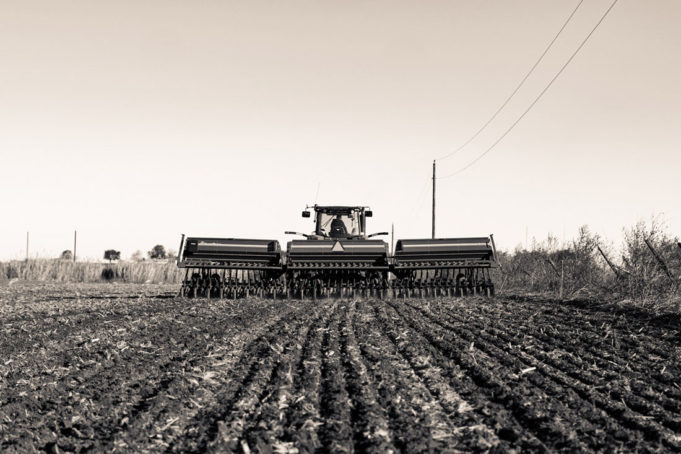There’s a lot of cross-pollination between craft beer, spirits, and wine concepts. The vino industry’s sommelier (wine expert) has a kindred spirit in the craft beer cicerone, for example. After three years of penning beer blogs for the Weekly, I thought I had heard all but the headiest of beer phrases until I chatted up Markus Kypreos, founder of Blackland Distillery. While giving me a tour of his Foundry District establishment last March, he posited a new word for my craft booze vocabulary.
“We hope to capture some of the region’s terroir,” he said.
So is this terroir (French for “soil”) really a thing?
Blackland, he continued, refers to the Texas Blackland Prairie that runs from the Red River in North Texas to San Antonio. By sourcing local grains for his distillery’s bourbon, gin, vodka, and rye whiskey, Kypreos is wagering that our native soil will give Blackland Distillery an edge in the regional craft spirits market.
The terroir idea has long been applied to winemaking. Many generic names for wine varieties (cabernet sauvignon, malbec, merlot) refer to a specific type of grape. No one would say that a French malbec (if you can find one) tastes anything like an Argentinian malbec. The difference, if you ask a winemaker, is due to climate, the steps taken during the winemaking process, and terroir. As I soon found out, that established concept has made surprisingly few inroads in the beer-brewing world.
Four years ago, local homebrewers Chase Leftwich and Austin Schumacher were surprised to find that their favorite craft beer breweries were boasting about being hyper-local while importing malted grain from as far away as Canada or Europe. It wasn’t that breweries were trying to pull a fast one on consumers. There simply was no local source for malted (semi-germinated) grains. Leftwich and Schumacher saw a business opportunity. After contracting with a handful of local farmers, the duo founded TexMalt. I recently visited their operation just south of downtown in the historic O.B. Macaroni Company building. After a quick tour, they gave me a crash course in the role terroir plays in making craft beer and spirits.
“It’s still a new concept to the local brewery scene,” Schumacher said. “Terroir is an imprint that comes from the region the grain is grown in.”
Industrial malters source grains from different regions. The results are consistent but have generic flavor profiles, Leftwich said. Grains grow differently depending on the chemical composition of the soil.
“Think of this area as opposed to the Panhandle,” he continued. “Here, we have rich, black soil. Go out and grab some soil and smell it. Those are some of the flavors you will get [in the grain grown there]. Our soil is rich in minerals, such as nitrogen. The richer the soil, the richer the taste.”
The malt meisters described our terroir as “bready” while the Panhandle’s terroir is “earthy, green, and sweet.” The Blackland Prairie is ideal for growing grain, but weather and climate can change certain properties of grains from year to year. Those modest fluctuations should be embraced, they said, because the variations are a natural part of working with nature on its terms.
One early beer brewery to embrace TexMalt’s vision was The Collective Brewing Project. Several breweries and distilleries have since followed suit. TexMalt’s founders plan to slowly grow their business into neighboring states. The benefits of using local malted grains could have a significant environmental impact by cutting down on transportation-related emissions and encouraging the use of native grains.
“If we can work with folks in Oklahoma or elsewhere, their terroir is unique to them,” Schumacher said. “Their product will be way more local or regional than anything they could buy from an international producer.”












